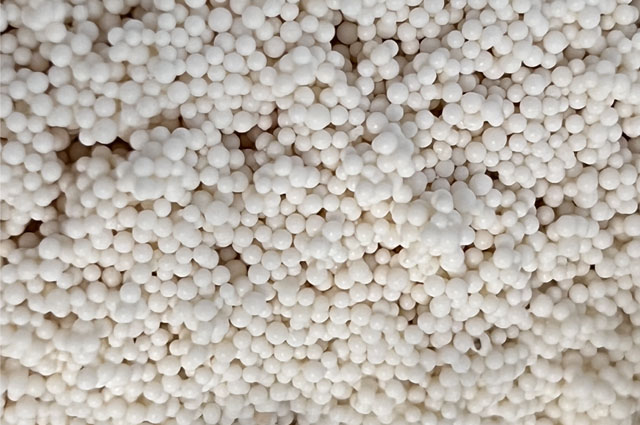Cu Removal Resin
Chemical, non-ferrous smelting, electronic materials and other industries will discharge a large amount of copper-containing wastewater. As a typical representative of heavy metal wastewater, copper-containing wastewater will cause serious environmental pollution and endanger human health once it flows into natural water bodies. When the intake of copper in the human body exceeds the standard, symptoms such as abdominal pain, vomiting, and eczema will appear in light, and diseases such as liver cirrhosis and intestinal cancer will appear in serious cases. In addition, copper is an important heavy metal resource, which is in huge demand in the process of economic construction and social development. Therefore, strengthening the resource utilization of copper-containing wastewater can not only improve the environmental pollution caused by heavy metal wastewater, reduce its harm to humans and other organisms, but also realize the recycling of copper resources.

Ion exchange treatment of copper-containing wastewater has the advantages of high separation selectivity, good copper removal effect, high concentration multiple and environmental friendliness. In copper-containing wastewater, copper exists in two forms, free copper and complexed copper, and appropriate ion exchange resins should be selected for treatment according to the existing forms of copper and water quality conditions. When copper exists in the form of complex anions (such as [Cu(CN)4]2-, [Cu(P2O7)2]2-, etc.), the copper removal effect of anion exchange resin is better, and it is often used in metallurgy, electroplating and other industries When copper exists in the form of Cu2+, cation exchange resin or chelating resin is generally used for adsorption. Among them, chelating resin has strong chelating ability for Cu2+, so chelating resin is suitable for treatment systems with complex, Copper-containing wastewater with low copper ion content
The aminocarboxylic acid chelating resin is a polystyrene divinylbenzene polymer with CH2N(CH2COOH)2 functional groups. These functional groups contain N and O lone pair electrons, which can be combined with Cu2+, Pb2+, Fe2+, Cd2+, Ni2+, Zn2+, etc. The cations undergo complexation. Compared with traditional cation exchange resins, our products have higher exchange capacity and exchange rate, and are now widely used and mature applications.

Ion exchange treatment of copper-containing wastewater has the advantages of high separation selectivity, good copper removal effect, high concentration multiple and environmental friendliness. In copper-containing wastewater, copper exists in two forms, free copper and complexed copper, and appropriate ion exchange resins should be selected for treatment according to the existing forms of copper and water quality conditions. When copper exists in the form of complex anions (such as [Cu(CN)4]2-, [Cu(P2O7)2]2-, etc.), the copper removal effect of anion exchange resin is better, and it is often used in metallurgy, electroplating and other industries When copper exists in the form of Cu2+, cation exchange resin or chelating resin is generally used for adsorption. Among them, chelating resin has strong chelating ability for Cu2+, so chelating resin is suitable for treatment systems with complex, Copper-containing wastewater with low copper ion content
The aminocarboxylic acid chelating resin is a polystyrene divinylbenzene polymer with CH2N(CH2COOH)2 functional groups. These functional groups contain N and O lone pair electrons, which can be combined with Cu2+, Pb2+, Fe2+, Cd2+, Ni2+, Zn2+, etc. The cations undergo complexation. Compared with traditional cation exchange resins, our products have higher exchange capacity and exchange rate, and are now widely used and mature applications.
Related Products
-
 Uranium Extraction Ion Exchange ResinPhysical Form: Opaque beadsIonic form: SulfateTotal Exchange Capacity (Cl− form) mmol/ml: ≥1.30
Uranium Extraction Ion Exchange ResinPhysical Form: Opaque beadsIonic form: SulfateTotal Exchange Capacity (Cl− form) mmol/ml: ≥1.30 -
.png) Anionic Polyacrylamide ResinPurity : 99.9%Color : WhiteMelting Point : >150°℃
Anionic Polyacrylamide ResinPurity : 99.9%Color : WhiteMelting Point : >150°℃ -
.jpg) Super Absorbent Polymer SAP for AgriculturalMain ngredient:Potassium PolyacrylatePhysical Property:Non-toxic,NonpollutingFunction:Drought control /Saving water /Soil conditioner
Super Absorbent Polymer SAP for AgriculturalMain ngredient:Potassium PolyacrylatePhysical Property:Non-toxic,NonpollutingFunction:Drought control /Saving water /Soil conditioner
Message

